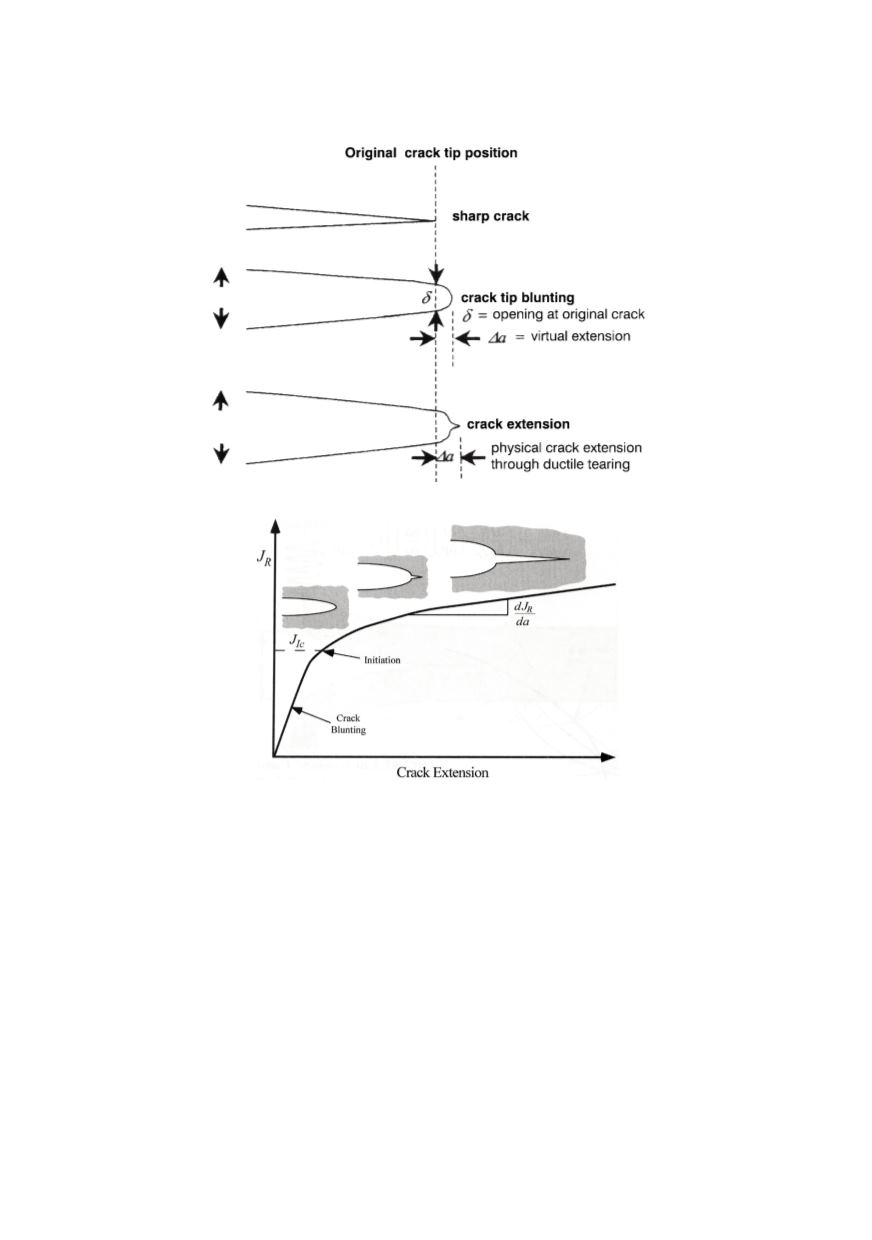

182
more difficult to perform, mainly due to the problems associated with identifying the
various stages of the fracture process.
Figure 5: Schematic of crack extension process in a ductile material
Figure 6: Schematic J integral vs. crack extension for ductile material - resistance curve
Thus, if a SZD measurement is going to be used, it is necessary to specify clearly the
methodology. Apart from accuracy in determining the fracture toughness of ductile mate-
rial, it is sometimes necessary to examine the nature of the variation when factors affec-
ting the toughness, such as the yield strength and strain-hardening exponent, can vary.
Literature which considers the convenience of the SZW or SZD in
predicting the nature of
the variation in fracture toughness with material properties is limited.
5. METODOLOGY FOR STRETCH GEOMETRY MEASUREMENT
Stretch-zone depth (SZD) measurements are not straightforward, but rather the values
have to be calculated from indirect measurements /9/. A blunted crack configuration is
shown in Fig. 9.a. In the figure, the SZW is the projected length (
w
) of the stretch zone
when viewed at 90° to the crack plane. In Fig. 9.b the specimen is tilted through an angle
α
and
stretch zone projection on the plane normal to the viewing direction is observed.


















